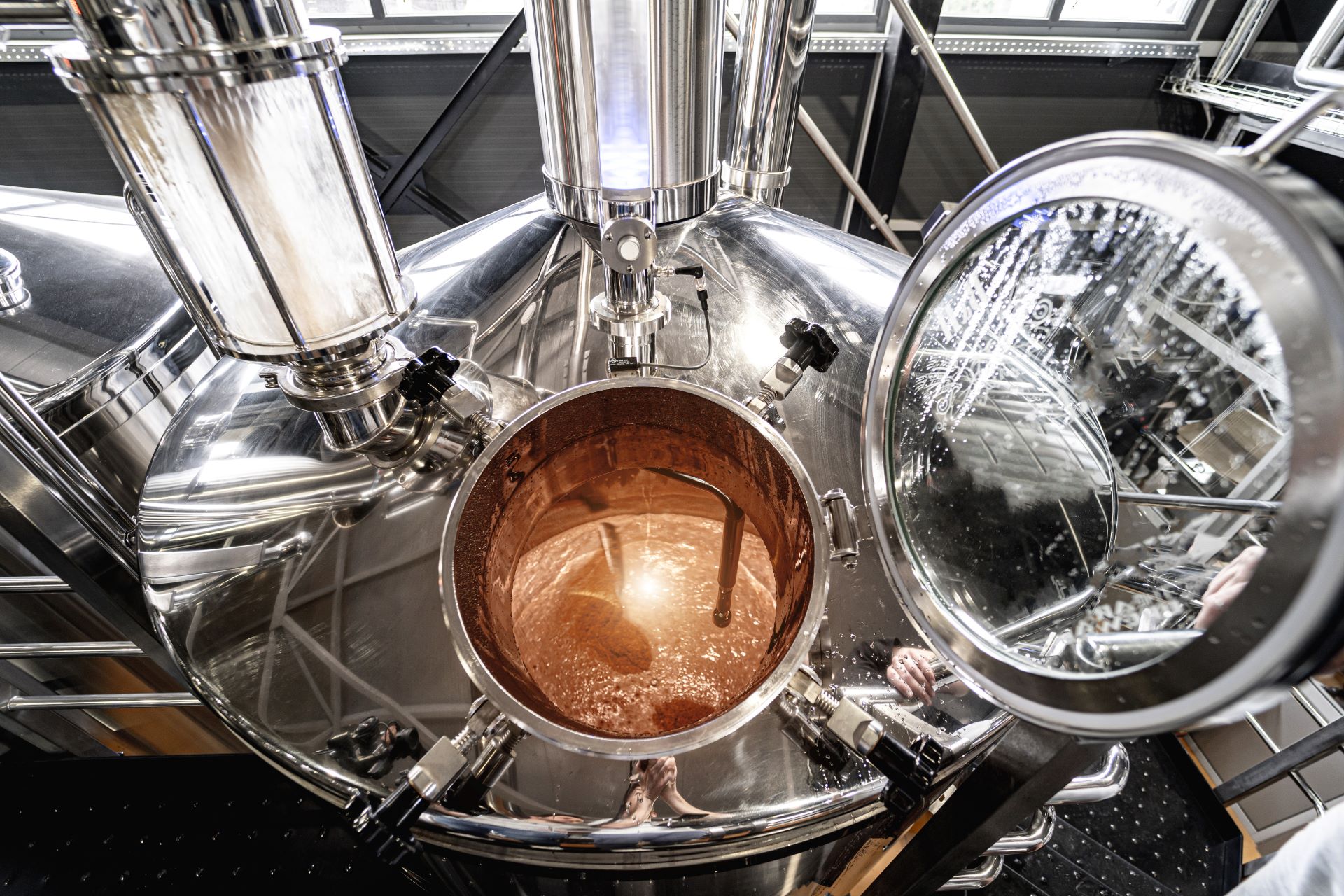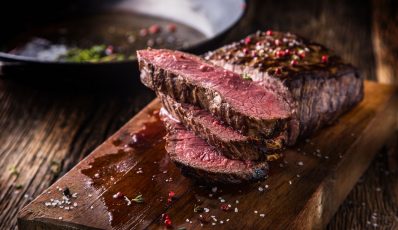Brewer's yeast is the heart of every beer! Thanks to the variety of available yeasts - from classic top- and bottom-fermenting strains to wild and experimental cultures - the possibilities of creating new beers are virtually limitless. In this article, we will take a closer look at the different types of brewing yeast, their impact on the brewing process and how the right choice of yeast can improve the quality of your home brew.

Brewer’s yeast is the heart of every beer! Thanks to the variety of available yeasts – from classic top- and bottom-fermenting strains to wild and experimental cultures – the possibilities of creating new beers are virtually limitless. In this article, we will take a closer look at the different types of brewing yeast, their impact on the brewing process and how the right choice of yeast can improve the quality of your home brew.
The importance of brewer’s yeast in beer production
Brewer’s yeast, also called brewing yeast, is a key element in the production of beer. These are single-celled fungal organisms that play a decisive role in the beer fermentation process, converting the sugars contained in the mash into alcohol and carbon dioxide. Thanks to them, beer gains its characteristic taste and aroma.
The role of yeast in beer production
The main function of yeast in the beer brewing process is alcoholic fermentation. Yeast absorbs sugars such as glucose, fructose, maltose and others that are extracted from malted grains and converts them into ethyl alcohol and carbon dioxide. This is a key stage that affects not only the alcohol content in beer but also the taste, clarity, and aroma of the drink.
The influence of yeast on the taste of beer
The choice of yeast strain is of great importance for the final flavor profile of the beer. Thanks to the variety of yeasts available, brewers can experiment to create new flavors and aromas. Characteristics such as fruitiness, spiciness and even spice notes are directly related to the type of yeast used.
Understanding the basic properties and functions of brewing yeast is crucial for anyone who wants to explore the secrets of beer production. This knowledge allows you to consciously choose the right yeast for a specific beer style.
Types of brewer’s yeast
Different strains of yeast offer unique fermentation and flavor profiles that can be used to create a wide range of beers. Let’s take a closer look at the main types of yeast used in brewing and their specific characteristics.
Top-fermenting yeast (Saccharomyces cerevisiae)
Top-fermenting yeast is most common in the production of ales such as IPA, stout, porter and many others. They are fermented at higher temperatures, usually between 15 and 24°C, which results in shorter fermentation times. These strains tend to produce rich, complex fruity, floral and spicy aromas. Their ability to operate over a wider temperature range makes them extremely popular among home and craft brewers.
Bottom-fermenting yeast (Saccharomyces pastorianus)
Primarily used in lager production, bottom-fermenting yeast works best in cooler conditions, usually between 7 and 13°C. This yeast ferments slowly and over a longer period of time, which helps to create a more subtle and purer flavor profile. Beers that use them are often clear and have subtle hop or malt notes, without the dominant fruity or floral aromas typical of top-fermentation beers.
Wild yeast
Among wild yeasts, the genus Brettanomyces is particularly popular. Primarily used in Belgian beers such as Lambic and Flanders Red Ales, Brettanomyces contributes to the creation of deeply complex, often sour and “wild” flavor profiles. Wild yeast can be used alone or in combination with traditional strains, adding a layer of complexity to beer.
Hybrid and engineered yeast
In response to the growing market demand for innovative flavors, some laboratories and brewing companies are developing hybrid and genetically modified yeasts. Such strains can ferment at unusual temperatures, bring out unique flavors or even reduce undesirable fermentation side effects, such as excessive hydrogen sulfide production.
The variety of brewing yeasts gives brewers a powerful tool for manipulating the flavor and style of beer. From classic Lagers to modern, experimental Ales, the right choice of yeast can completely change the character of the beer.
-
Mash Tun – with insulation – 60 L – 3000 W – 10 – 100 °C – stainless steel – LCD display – timer
-
Conical Fermenter – 70 L – 0 – 40 °C – stainless steel – with insulating cover 299.00 €
-
Immersion Wort Chiller – Ø 26 cm – 10 coils – stainless steel
-
Stainless Steel Trolley – for mash or brew kettles – 45 x 45 cm – 150 kg
Selecting the right brewing yeast for different beer styles
Selecting the right yeast strain is crucial to achieving the desired flavor profile and style of beer. Brewers, both amateur and professional, must thoroughly understand the characteristics of different yeasts to realize their full potential. In this section, we will discuss how to select yeast for each beer style, highlighting its impact on the final fermentation result.
Yeast for ale beers
Ales are a broad category that includes styles such as Pale Ale, IPA, Stout, and Porter. Top-fermenting yeasts are ideal for these beers, as they typically bring rich, fruity and ester flavor profiles. Strain examples:
- American Ale yeast : This strain is perfect for American IPA beers, providing a clean, crisp profile that allows the hops to shine through.
- English Ale yeast: Used in Bitters and Porters, it produces subtle fruity notes that compliment the maltiness and balanced flavor profile of these beers.
Yeast for lager beers
Lagers require bottom-fermenting yeast strains that work best at lower temperatures, which translates into subtle maltiness and a clean profile. This yeast is ideal for creating delicate and refined beers such as Pilsners, Märzens and Bocks. Strain examples:
- German Lager yeast : This strain is perfect for producing traditional German lagers, offering low ester levels and a clean, balanced taste.
- Bohemian Lager yeast : Perfect for Czech Pilsners, this yeast highlights the delicacy and purity that are the hallmark of this style of beer.
Yeast for Belgian beers
Belgian beers such as Saisons, Dubbels and Lambics, and beers with the addition of wild yeast, require special strains that can produce complex and often spicy flavor profiles. Examples of such yeast strains include:
- Belgian Ale yeast : This yeast is used to produce a wide range of Belgian beers and offers complex, often spicy and fruity esters.
- Brettanomyces : Brettanomyces yeast can add unique earthy or sour notes that are desirable in certain styles of craft beer.
Yeast for special and experimental beers
Brewers experimenting with new flavors can use hybrid strains, such as:
- High Gravity yeast : These strains are adapted to fermenting beers with a high concentration of sugars, ideal for Barley Wines or Imperial Stouts.
How to make your own brewer’s yeast?
Growing your own brewer’s yeast can be an interesting way to experiment with brewing beer at home. Here’s a quick guide on how you can make brewer’s yeast yourself:
Harvesting Yeast : Start by isolating yeast from a bottle of commercial beer that is unfiltered and unpasteurized. This yeast can be found in the sediment at the bottom of the bottle.
Preparing the yeast culture medium: Create a simple medium consisting of water and slightly overcooked barley malt. Dilute the malt in water to a concentration of approximately 1.030 SG (specific gravity), which will provide a suitable environment for the yeast to grow.
Sterilization : Boil the medium for 10 minutes to kill unwanted microorganisms. After cooking, cool the medium to a temperature of approximately 21-24°C.
Inoculation : Add the yeast pellet to the cooled medium. Use sterile tools to avoid contamination.
Incubation : Store the mixture in a warm place (around 20-25°C) and allow the yeast to multiply for a few days. You can cover the container with foil or a thin cloth, allowing the yeast access to the oxygen it needs during the initial growth phase.
Expansion of the culture : When you notice yeast activity (e.g. gas bubbles), gradually add more medium. Maintain sterility throughout the entire process.
Storage : Once you have reached the desired amount of yeast, you can store it in the refrigerator. Be sure to use airtight containers to extend the life of the yeast.






Share